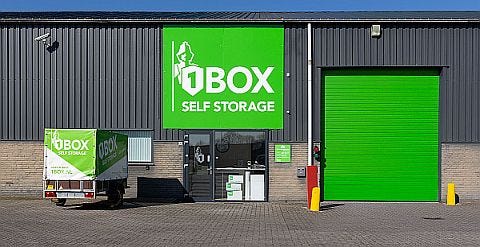European self-storage operators continue to thrive, but like their U.S. counterparts, they face obstacles. In this Q&A, the president of 1Box Group examines the market and provides predictions for its future.
December 13, 2022

Though separated by thousands of miles, the European and U.S. self-storage markets have a great deal in common. As president of 1Box Group, which operates nearly 30 facilities in France and the Netherlands, and its parent company, Miami, Florida-based Volta Global, Jeff Evans has a front-row seat from which to view the industries in both regions.
 With more than 15 years of experience as an investor and entrepreneur, Evans has invested hundreds of millions of dollars in hospitality, self-storage, multi-family and other asset types. He spearheaded 1Box’s development of 800,000 square feet of self-storage in Europe. Since 2015, he’s also overseen the development of Volta’s 1 million square feet of self-storage in the United States. He shares a vision with managing director Jan Bikker, a Dutch businessman with more than 20-plus years of self-storage experience, to make 1Box a top operator across at least three European countries by 2025.
With more than 15 years of experience as an investor and entrepreneur, Evans has invested hundreds of millions of dollars in hospitality, self-storage, multi-family and other asset types. He spearheaded 1Box’s development of 800,000 square feet of self-storage in Europe. Since 2015, he’s also overseen the development of Volta’s 1 million square feet of self-storage in the United States. He shares a vision with managing director Jan Bikker, a Dutch businessman with more than 20-plus years of self-storage experience, to make 1Box a top operator across at least three European countries by 2025.
Evans recently shared his perspective on the European self-storage market and his predictions for the future of the industry there.
What’s the state of the European self-storage industry?
I would characterize it as being in the early innings of a secular growth trend in awareness of self-storage as both a customer service and a real estate asset class. Saturation levels across many European markets are a mere 10% to 20% of those in the U.S. In many of these countries, customer awareness—in terms of knowing or being familiar with what the service actually is—is often 15% or less. But most are demonstrating strong growth in awareness and new supply of self-storage facilities with each passing year.
Who are the major customers in the markets 1Box serves?
The customer profile of self-storage users in Europe is very similar to what we experience in the U.S. Many of the demand drivers from private (non-commercial) customers are the same: life events, residential migration or dislocation, the need for more space at home, etc. The mix of private vs. business customers across our European portfolio is also remarkably similar to that of the U.S. We typically expect commercial customers to make up 20% to 30% of our total base.
What’s the status of new development?
Both conversions and ground-up construction are prevalent across Europe, though new supply is geared slightly more toward ground-up developments, which seems to be the preferred model for most REITs and larger local players in these countries.

1Box Storage in Tilburg, the Netherlands
What challenges does the self-storage industry face in Europe?
In general, many of the challenges faced in Europe are similar to those of the U.S. They include:
New supply outpacing the growth in customer awareness and demand for the product
Labor and staffing issues
General weakness in the macro environment
Difficulty in finding high-quality sites for new, either due to municipal pushback or lack of inventory
Of those concerns, the labor/staffing and macroeconomic risks are in greater focus. European operators must deal with a much less flexible labor regime and be much more strategic in their approach to scaling and staffing their sites. As we know from being operators in the U.S., storage can be a very cyclically resistant asset class; but its limited track record in Europe presents some level of uncertainty in terms of customer behavior and site performance, especially as we look at what is increasingly becoming a more certain economic recession.

1Box Storage in Sittard, the Netherlands
What are your predictions for the future of self-storage in Europe?
I expect the industry to steadily grow in the coming three to five years as existing operators try to maintain market share and new entrants increasingly look to establish platforms in the region.
The industry is also experiencing a high diversity in operational models. New entrants can start by employing a mix of technologies and site formats to best suit customer needs and their own unique operational approach. As a result, you may not have the same trend as in the U.S. of first-, second- and third-generation product gradually evolving over time, but rather a larger diversity in product based on the preferences and quality of European operators today and into the future.
The European self-storage market has a lot of promise but, we can now say from experience, it also presents a very high degree of challenge when it comes to building out the infrastructure and expertise in multiple countries. I love connecting with other owners, operators and investors in this space who have an interest in Europe and sharing stories.
To learn more, visit www.1boxgroup.com and www.voltaglobal.com.
You May Also Like





